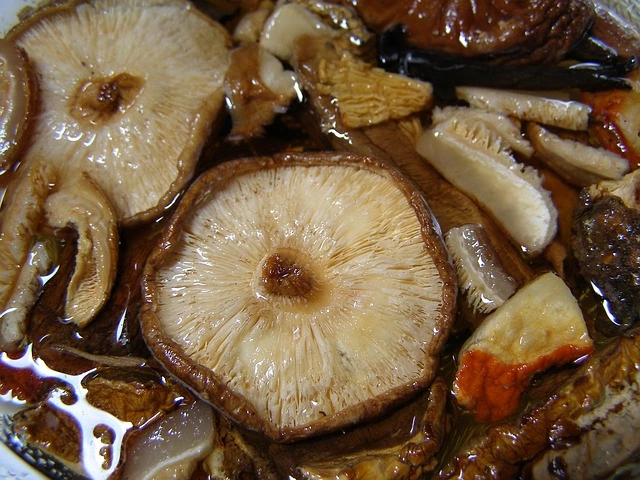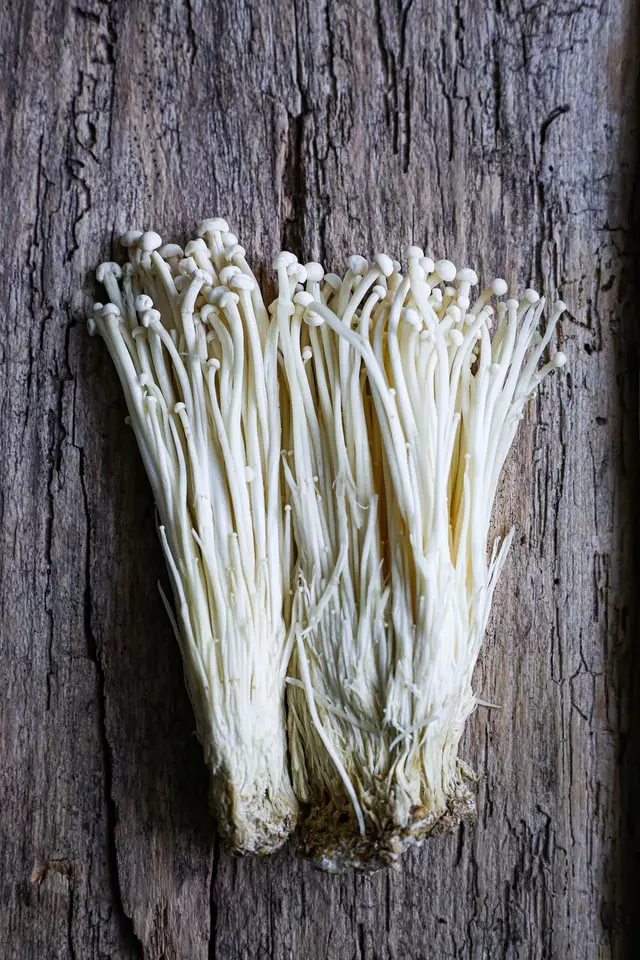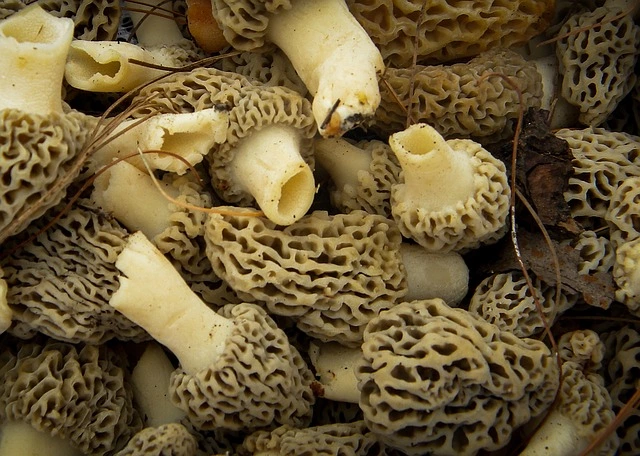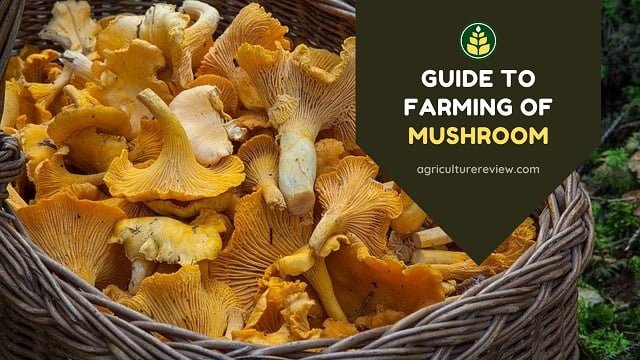This ultimate guide on farming of mushroom will help you to understand basics of mushroom cultivation. Get to know how you can start your own profitable mushroom farm by reading this article.
Unlike cultivating other traditional crops that requires space, time, and high investment, cultivating mushroom is easy. It doesn’t require high investment and you can also cultivate mushroom in a small piece of land.
Therefore even if you are a small scale farmer who is struggling to make profits, mushroom farming can be the gold in the pool. You just have to learn the appropriate skills, practice a little and then dive in to get that gold.
And I will help you in understanding basic concepts and skills that will help you in starting your own mushroom farm. But before understanding the process of cultivation, let’s get know about edible mushrooms that we can cultivate.
Table of Contents
Edible/Cultivated Mushrooms
You must have witnessed the growth of different kind of mushrooms during rainy season. But you never ever have eaten them. Have you ever thought why?
It is quite simple as not all mushrooms are edible or beneficial to us. In the world there are more than 2,000 species of mushrooms but only 25 species of mushrooms are considered as edible mushroom widely. Among these 25 species Button mushroom i.e. Agaricus bisporus is the most cultivated mushroom in the world.
Let’s learn about 5 widely cultivated Edible mushrooms in the world:
Button Mushroom

Button mushrooms (Agaricus bisporus) are popular for their mild flavour, soft texture and nutritive value. They are good source of protein, vitamin-B, riboflavin, niacin, and pantothenic acid.
According to an estimate around 90% of the mushrooms cultivated in the world are Agaricus bisporus and their cultivars. You can cultivate them during winters in regions where temperature remains below 20o Celsius.
Oyster Mushroom
Oyster mushroom (Pleurotus ostreathus) is also a common popular edible mushroom. Moreover farmers can also cultivate oyster mushroom for selling to industries for mycoremediation purposes.
They are quite easy to cultivate and if you are thinking about starting mushroom farm then you can easily start by farming of oyster mushrooms.

Shiitake Mushroom

Shiitake mushroom (Lentinua edodes) is famous of low water content, high nutritive value, and smoky flavour.
Shiitake mushrooms are widely cultivated in East Asian countries and are also used in some forms of traditional medicine. You can cultivate shiitake mushroom under optimum temperature range of 22 to 26 Celsius and the cropping cycle will end in around 110 to 120 days.
Enoki Mushroom
Enoki mushroom (Flammulina velutipes) that is also popular as velvet shank is a popular mushroom species of Japan. They are popular for their fruity flavour.
It is a long, thin white mushroom that has tiny caps on them. Spawn running of enoki mushroom can occur in temperature range of 21 to 24o Celsius and growth can occur between 3 to 14o Celsius. And the cropping cycle gets completed in 4 to 6 weeks.

Morel Mushroom

Morel mushroom (Morchella esculenta) that is also known as Guchi mushroom is one of the most important economically beneficial mushroom of the world.
However cultivating morel mushroom is very difficult that’s why the cost of morel mushroom in the market is high. One Kilogram of morel mushroom cost around 10,000 to 30,000 Indian rupees.
Other popular edible mushrooms that you can cultivate are Portobello, Straw, Milky mushroom etc.
Now you know the names of famous edible mushrooms in the world. But you must be thinking what’s next?
Well unlike practicing kiwi farming, or cultivating cereal or pulses crop, etc. you can not cultivate mushroom directly on the soil under direct sunlight. You need to prepare a closed structure and substrate to start farming of mushroom.
It will require a small amount of investment but within short period of time it can give good returns. You can construct either bamboo based or wood based mushroom house.
Out of all the edible mushrooms cultivating oyster mushroom is quite easy. That’s why in this article we will learn about farming of oyster mushroom so that you can start your own oyster mushroom farm.
Farming Of Mushroom (Oyster)

Growing Season
Temperature range of 18 to 25 Celsius is ideal for cultivation of Oyster mushrooms. Therefore in tropical regions you can start cultivating from November to April. However if you have installed AKS controller in mushroom house then you can easily cultivate them anytime during the year.
But during summer season the yield can get lower due to disease and pest infestation. During summers you can cultivate Pleurotus sajor-caju or Pleurotus sapidus species of oyster mushroom as they can grow well during this season.
Optimum temperature requirement of different oyster mushroom species are:
| Common Name | Scientific Name | Optimum Temperature |
|---|---|---|
| White Oyster | Pleurotus florida | 20 to 28o Celsius |
| Pink Oyster | Pleurotus djamor | 20 to 26o Celsius |
| Grey Oyster | Pleurotus sajor-caju | 20 to 28o Celsius |
| Black Oyster | Pleurotus ostreatus | 18 to 22o Celsius |
Substrate Selection
Mushrooms grow on substrate therefore selecting a good quality substrate is necessary. You can use cellulosic agriculture by products of rice, maize, banana, mustard, sawdust etc. as substrate. However paddy straw or rice straw is one of the best substrate for cultivating oyster mushroom.
But make sure that paddy straw is of good quality and is not wet.
Cultivation Methods
You can cultivate oyster mushrooms by practicing any one among these two methods:
- Polybag Culture/Polythene Bag Method
- Cube Culture Method
Out of these two methods, Polythene bag method is easy to practice and is widely used among mushroom farmers. For farming of oyster mushrooms via polybag culture method you will require:
- Paddy Straw
- Tray
- Spawn (Seed of Mushroom)
- Water Boiling Drum
- Chaff Cutter
- Transparent Polythene Bags ( 45×20 Centimetres)
- Single Hole Punch Machine
- Sprayer
- Jute Thread
- Garlic Extract
The quantity of these materials will depend on the area in which you are going to cultivate mushrooms. Once you arrange these important materials then you need to follow these steps.
Preparation Of Substrate
Buy good quality 2 Kilograms of paddy straw golden yellow in colour for one polythene bag. Chop this paddy straw to about 5 centimetres long using hand chopper or chaff cutter. Then you have to soak this chopped straw in cold water for 6 to 8 hours (overnight).
During winters you can prepare lime water solution for soaking purpose. For this you can add 20 grams of CaCO3 in each litre of water that you are using to soak chopped straw.
Take out soaked straw from cold water and give hot water treatment for 30 minutes. The temperature of the hot water should be around 70 to 80o Celsius. This process of boiling straw in water will help to destroy pathogens.
After boiling of straw take them out from the boiling water and spread them on clean floor. Once they get cool drain out the excess water by squeezing chopped straw.
Preparation Of Stock Solution
Prepare stock solution by prepared by making paste of 50 grams of garlic cloves mixed in 50 ml of water. Squeeze this prepared paste through muslin cloth and your stock solution is ready.
Spray 3 to 5 ml of garlic extract or stock solution mixed in 1 litre of water over 5 kilograms of chopped boiled straw. This will help in preventing contamination of mushroom beds.
Preparation Of Polybags
This step is necessary to prepare proper ventilation to support ideal growth of mushrooms. Fold each of the polybag twice and make holes at a distance of 10 centimetres with the help of a punch machine.
Holes of 5 mm diameter are ideal and each polythene bag should have 15 to 20 holes. This will allow proper ventilation for growth of oyster mushrooms. Then tie the closed end of the polythene bag. You can do this with the help of jute ropes. This step will give a round flat bottom to the bag.
You can also use ventilation pipes but this is a optional method.
Spawning
You can use spawn at the rate of 2%, i.e. for 1 Kilograms of straw you will need 20 grams of spawn. For spawning first fill the polybag to 10 cm layer of chopped boiled dried straw and then press this layer with hand to a height of about 5 centimetres.
Spread 50 grams of spawn on this layer. Spread more on sides and less on centre. By continuing this process prepare 5 layers of straw and 4 layers of spawn.
Once the polybag gets filled then tie the open end with jute rope tightly. If possible then add tags to the prepared bags mentioning species and date of spawning. This will help in later stages of mushroom farming.
Spawn Running
After completing the process of spawning, keep the filled and closed polybags in a dark and closed room for spawn run. The process of spawn running will get completed in around 15 to 18 days and requires temperature around 25 Celsius.
When you notice white to cream coloured mycelium mat has covered the entire straw then it is the indication that spawn running is completed now.
Opening Of Mushroom Bed
Once the process of spawn run gets completed then you have to practice opening of mushroom bed carefully. However during summers you can try alternative method in which you have to prepare silt with the help of a blade.
Make silt at places where lumps and pinhead initiates. This will allow good growth of mushrooms from that point. Although in other growing seasons opening of mushroom beds is an ideal practice.
For this open the mushroom bag from upper end, place your hand to hold the growing material and turn it upside down. Now carefully with the help of other hand remove the polybag completely. Make sure to avoid damaging of growing mycelium.
Now place these opened mushroom beds on racks in well closed and dark cropping room to avoid pest and disease infestation. This will allow growth of mycelium from all sides and can give you higher yield.
Cropping Period & Care
Once you have moved mushroom beds in cropping room then you will notice growth of mushroom fruit bodies in clusters within 5 to 7 days. They are called pinheads. During this time period keep the bed moist by spraying water.
These pinheads will get fully developed within 3 to 5 days after their appearance. At this stage you can harvest your own grown oyster mushrooms for commercial purposes. You can spray water 8 to 10 hours before harvesting.
Upward or downward curling of margins is the indication of over maturity of mushrooms. Hence harvest before this stage. After harvesting you can again start spraying water for developing new crop growth.
Harvesting Process
For harvesting of oyster mushrooms, hold the stipe of fruiting body between thumb and forefingers and twist it clockwise. Take care to remove all the portion of stipe from the bed to avoid saprophytic growth of other bacteria or fungi.
After first harvest the next flush of mushroom will appear within 15 to 20 days. The first three harvest are considered as economic harvest. You can sell these harvested mushrooms in commercial market.
Author’s Note
I guess you are now clear on farming of oyster mushroom. If you have any ideas, queries or suggestions then comment below. You can also connect with Agriculture Review on Facebook, Instagram, and Koo.





